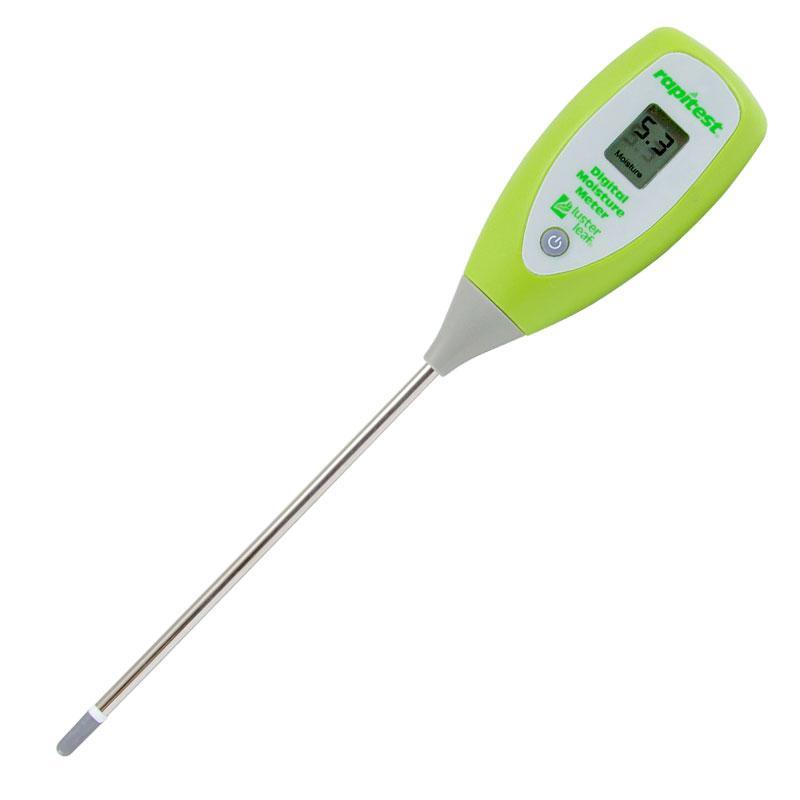Moisture Meter Reviews: Contrasting the very best Models for Specialist and DIY Usage
Moisture Meter Reviews: Contrasting the very best Models for Specialist and DIY Usage
Blog Article
Delve Into the Globe of Moisture Meters: Every Little Thing You Required to Know
In the world of wetness meters exists a world of precision and functionality that commonly goes unnoticed. Comprehending exactly how moisture meters operate, the various types available, and their diverse usages can drop light on their value in ensuring high quality and effectiveness.
Just How Moisture Meters Work
Moisture meters operate by determining the electric conductivity or capacitance of materials to identify the moisture content present. These meters are important tools across different industries, consisting of farming, woodworking, and construction. By utilizing different methods such as pinless or pin-type technology, dampness meters provide exact analyses that help experts make educated decisions.
Pin-type moisture meters work by inserting the sharp pins right into the product being tested. On the various other hand, pinless wetness meters make use of electromagnetic signals to scan a larger location without creating any kind of damages to the product's surface.
No matter the approach made use of, dampness meters play a crucial duty in stopping concerns such as mold development, architectural damages, or item defects triggered by excess wetness. Recognizing exactly how these meters job is crucial for making sure the top quality and integrity of materials in different applications.
Kinds of Moisture Meters
Offered the vital duty dampness meters play in numerous markets, it is vital to understand the various types available to professionals for properly examining wetness degrees - Moisture Meter. There are mainly two major kinds of moisture meters: pinless and pin-type moisture meters

On the other hand, pinless wetness meters make use of electro-magnetic sensor plates to scan a larger area of the material without triggering any kind of damage. This type appropriates for quickly scanning big areas and is frequently used for floor covering, walls, and ceilings. Pinless meters are convenient for taking analyses on finished surfaces without leaving any kind of visible marks.
Both sorts of moisture meters have their benefits and are selected based upon the certain needs of the task available. Recognizing the distinctions between these kinds is essential for experts to make accurate dampness evaluations.
Applications Throughout Industries
Construction experts rely on moisture meters to assess the dampness levels in structure products like wood, drywall, and concrete, which is vital for maintaining structural stability and preventing issues like rot or mold. The flooring market makes use of moisture meters to gauge the dampness material in subfloors prior to installing various floor coverings, avoiding expensive problems due to excess dampness. In the food sector, dampness meters are used to check and regulate moisture degrees in products such as grains, nuts, and dried out fruits to maintain freshness and top quality.
Tips for Using Dampness Meters
Make use of the moisture meter's calibration setups to ensure precise analyses when gauging the dampness web content in different materials. In addition, make their website certain the meter is set to the correct moisture array for the product you are determining to get the most precise results.
When making use of a pin-type dampness meter, insert the pins to the ideal deepness recommended for the product being tested. This guarantees that the dampness readings are drawn from the correct deepness within the product, supplying a much more accurate representation of its dampness web content. For pinless wetness meters, bear in mind to preserve proper call with the product's surface area to obtain dependable readings.
Consistently inspect and change the batteries in your moisture meter to stop imprecise readings due to reduced power. Store the meter in a safe and completely dry place when not being used to extend its life expectancy and preserve its accuracy. By adhering to these ideas, you can optimize the performance of look at this website your dampness meter and acquire precise wetness material measurements across various materials.
Maintenance and Calibration
To ensure the accuracy of dampness material dimensions, regular maintenance and calibration of the wetness meter are vital steps in its appropriate functioning. Upkeep entails keeping the dampness meter tidy and free from particles that might impact its analyses. It is necessary to comply with the maker's standards for cleaning to avoid damages to the device. Furthermore, routine calibration is required to confirm the precision of the readings. Calibration changes the dampness meter to ensure that it provides trusted and regular results.
Calibration ought to be performed regularly, especially if the moisture meter is utilized frequently or in crucial applications where accurate dimensions are called for. By maintaining and adjusting the dampness meter frequently, customers can rely on the precision of the wetness material dimensions gotten.
Verdict

In verdict, wetness meters play a vital role in various sectors by accurately gauging the dampness content of products. Understanding how these gadgets work, the different types offered, and correct upkeep and calibration are essential for obtaining trustworthy outcomes. Whether in production, farming, or building and construction, the use of wetness meters aids make sure quality control and effectiveness in processes.

In final thought, moisture meters play a vital function in various sectors by precisely measuring the wetness web content of materials.
Report this page